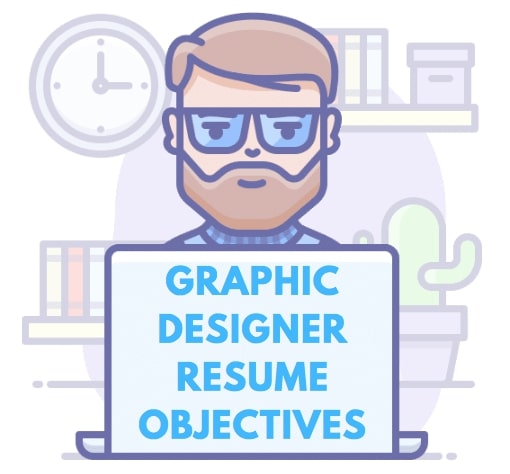5 Key Elements of Graphic Design Resume

posted:4 years agobyAwatef Hamdiin Cover Letters
Graphic design is an art of using visual elements to produce images, icons, colors and many other aspects to promote ideas. There are many types of graphic design; each type operates in different fields of interest. In fact, every kind of graphic design is based on a specific set of skills and techniques. In this article, we will show you the steps of writing a Graphic designer’s resume, including its objective section.

Since the industry is in a constant change, there is no single type of graphic design. Therefore, designers need to include in their application what are the services that they can provide. For similar topics, do check these articles:
10 Most-in-Demand Skills to Apply for Tech Jobs in Pakistan
Everything You Need to Know About User Experience (UX) Designer Salary, Jobs, Role, and Skills
How to write a Graphic Design Resume
Graphic design is a career that requires skills and qualifications. When it comes to resumes, graphic designers need to prove creativity and provide the history of any obtained project. A graphic design resume should be both which be both creative and professional.
What elements should be included in a graphic design resume?
There are many elements that should be included in a graphic design resume. There are:
- General factors, such as personal information, contact, and skills
- Specific items, such as work experience, degree, projects.
These are the elements that are included in any average resume. However, the field of graphic design is necessarily based on the way creativity and skills are shown. For example, if you want to apply for a graphic designer post, you need to show them samples or mention the designs you have done, s,ch as designing magazine covers, calendars, advertising posters. If you don’t have any of these mentioned examples in your resume, provides a sample of most demanded items, and put them in your resume and write, I can do a calendar like the one attached in the file. Promote your services by providing visually engaging works.
There are 5 key elements for a graphic designer resume:
- The Resume template:
There are many templates for resumes online. Writing an excellent graphic design resume starts by choosing the right template
- An about me Section
In every resume, there is an introductory section that includes a biography of the candidate. This section consists of a short description and some information about the applicant's age, studies, and interests.
- A Graphic Designer Objective Statement:
A graphic designer creates commercial images for company logos or any other artwork that requires graphic design software. This position requires a well-written objective statement in a graphic design resume. Graphic design resume objectives inform employers about the candidate skills and experience or the ability to execute different types of projects in the past.

Sample Graphic Designer Resume Objectives
In general terms, resume objective statements should focus on candidate skills, qualities, and potential services. Many hiring managers are interested in reading a statement like.
- A creative person seeks graphic designer job opportunities able to do eye-catching artwork that will meet clients’ expectations.
- An experienced graphic designer seeks a position at your company to invest his knowledge in the industry by providing exclusive designs in the commercial field.
- An artist seeks a graphic design position to make engaging and effective work that will cover the needs of clients while adhering to deadlines.
- A graphic Designer seeks an opportunity to present and add to high-quality content, including logos, promotional images, and many other assorted crafts.
- Graphic designer portfolio
Graphic designers require an annexed portfolio to show sampled work. However, a good graphic design resume includes more skills. If you are applying for companies, you need to show that you can effectively handle teamwork and manage communication with clients or employers. A design portfolio or personal website is not enough to show your potential for designing projects. Additional skills required in a graphic design job description can ace your application. Your resume should focus on mentioning other skills. You can add sample projects of your ability to create logos or designing posters for events.

- Skills
The skills you need to include on your Graphic Designer resume should be fit to the job description. This section is not about listing all the skills you have. You should be realistic in choosing the most required skills. For this purpose, you need to consider 4 steps in adding the appropriate skills to your Graphic Designer resume
1. Reading: you should carefully read the job description and write down all of the mentioned skills.
2. Comparing: make another column and down all of your skills, including hard skills and soft skills like working well in groups.
3. Connecting: try to match your skills with those in the job description
4. Illustrating: show that you have these skills. Provide examples instead of merely listing them.
Other skills can be related to graphic design like having software knowledge, adobe, illustrator, Microsoft office, etc..
4 Best Job skills Set to Make An Impressive Resume
Types of Graphic design resume:
- Junior graphic designer resumes
A junior graphic designer doesn’t have a developed portfolio. It can be a fresh graduate or a self-learner. This category of graphic designers should master the basics of what is mentioned in the field of interest like illustration, editing, or UI design.
- Graphic design intern resumes
If you are going to apply for a graphic design internship, you don’t need to write a significant portfolio loaded with designs. You should instead persuade the company about your resolutions of learning fast. Moreover, specify what kind of graphic design you want to profess in the future.
Things that you should not include in your resume as a graphic designer:
- A full portfolio with various graphics.
- Bad template and format
- Too much information and data that don’t associate with the field of application.
